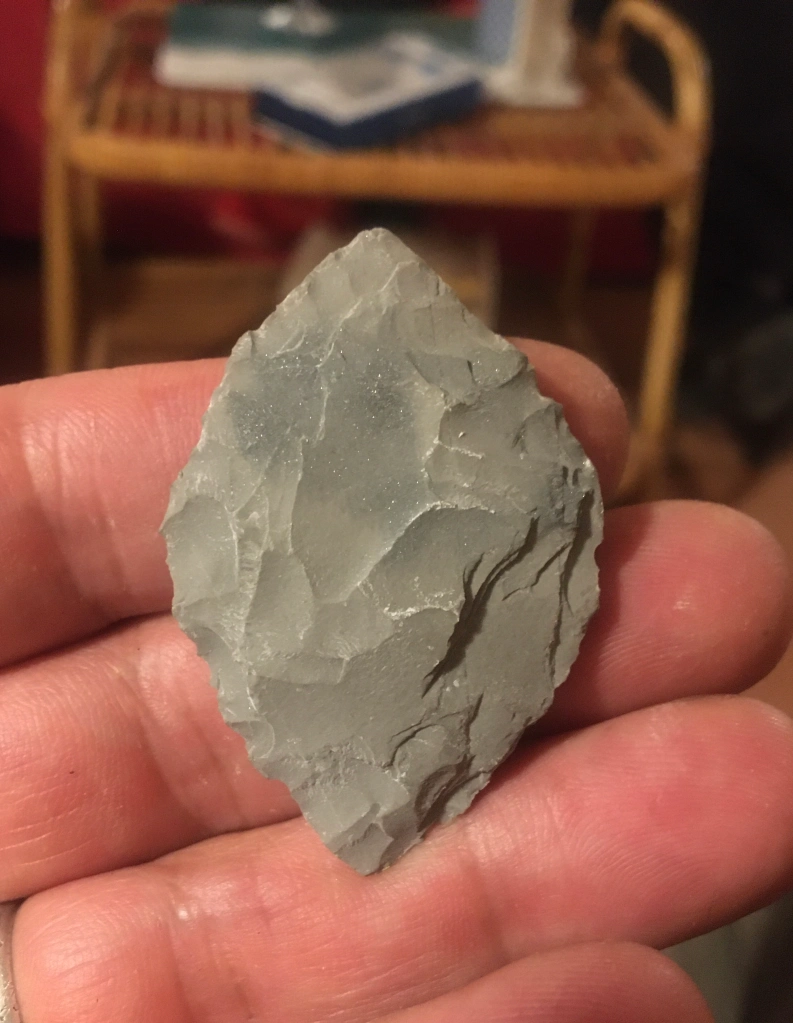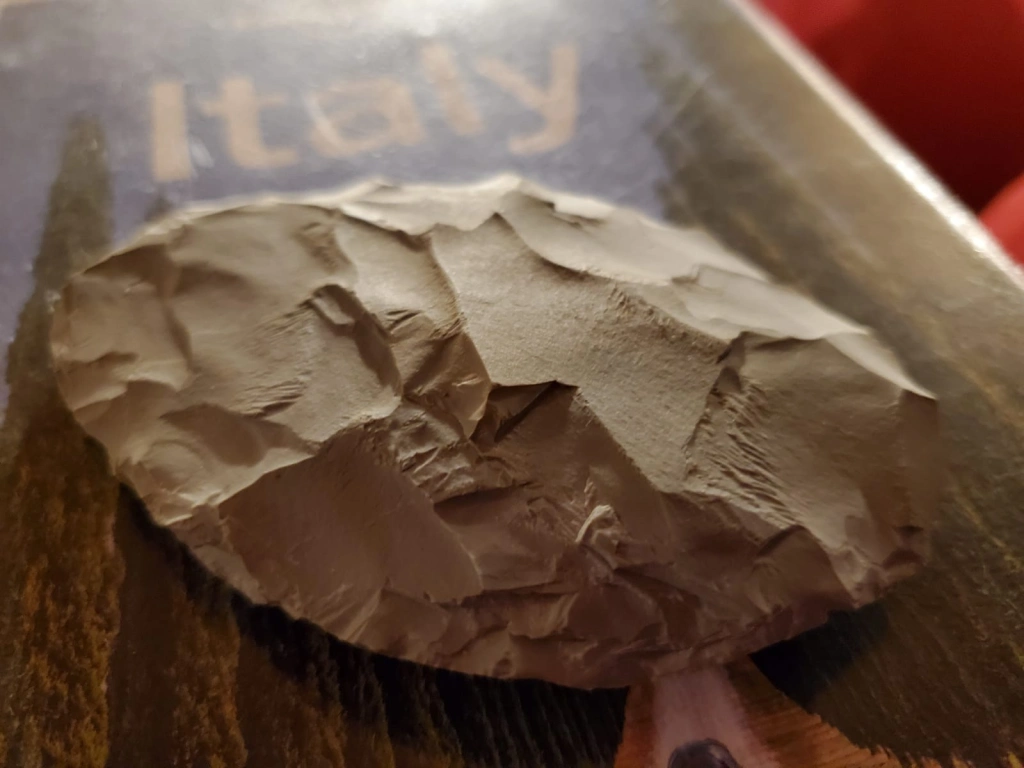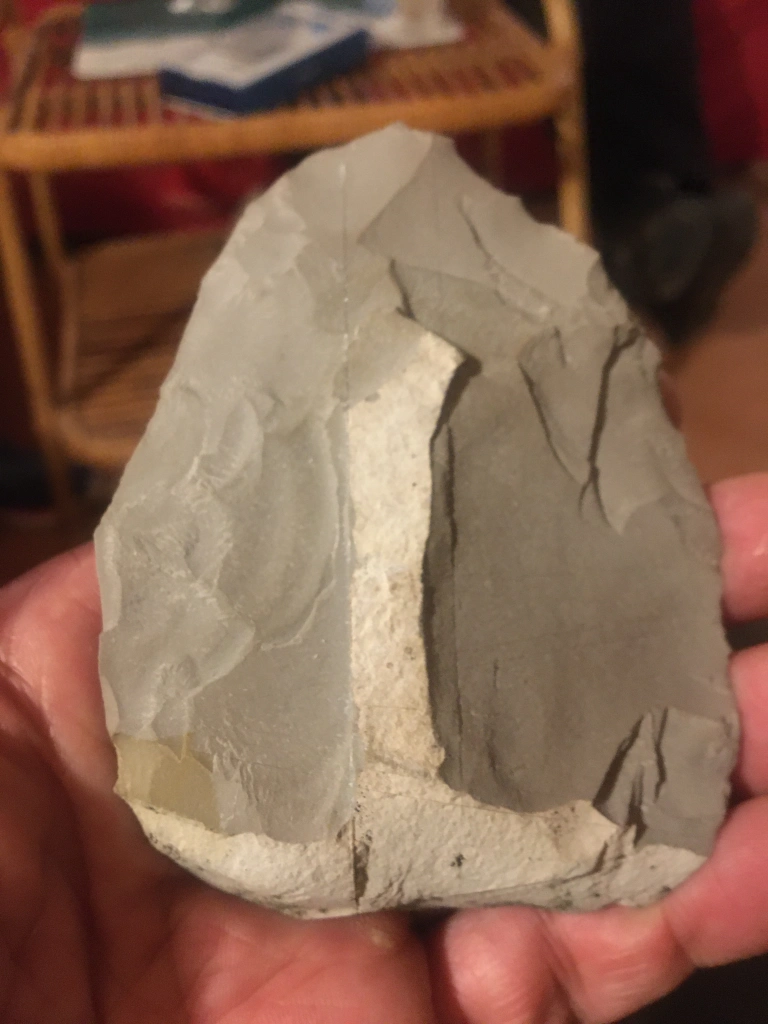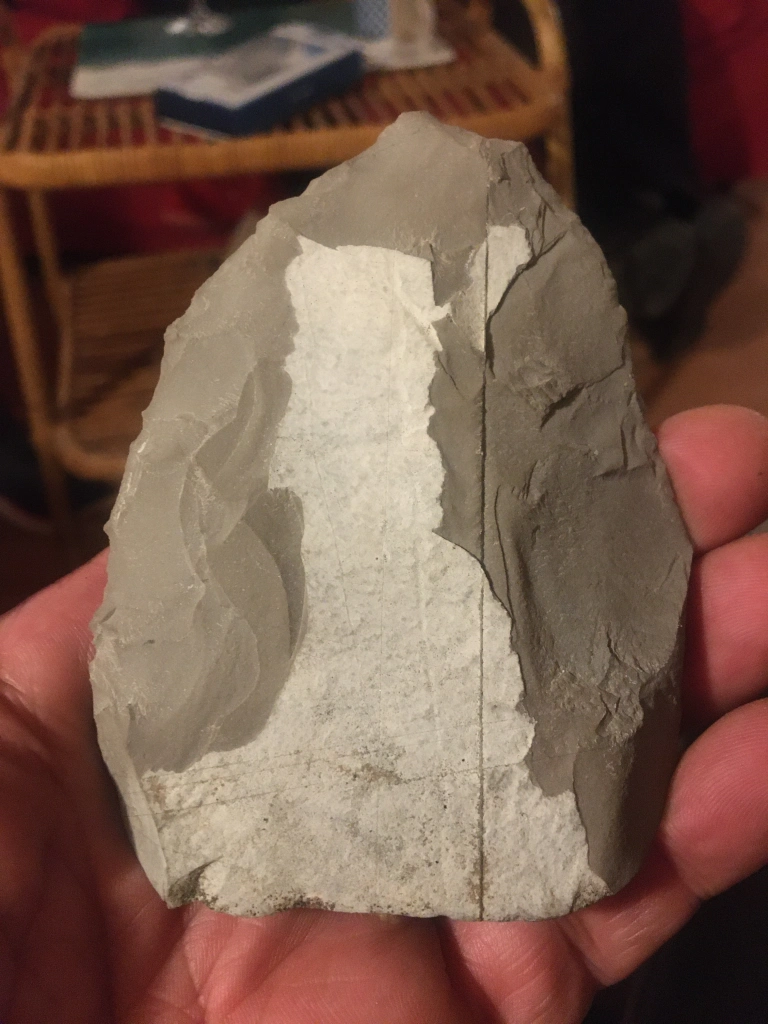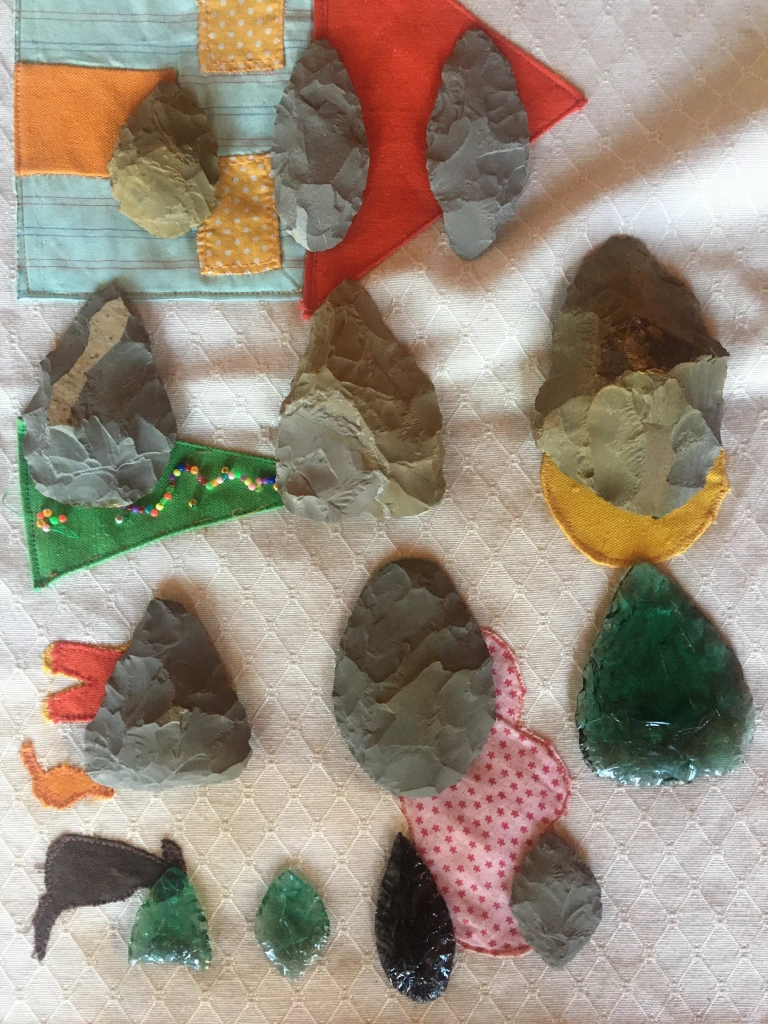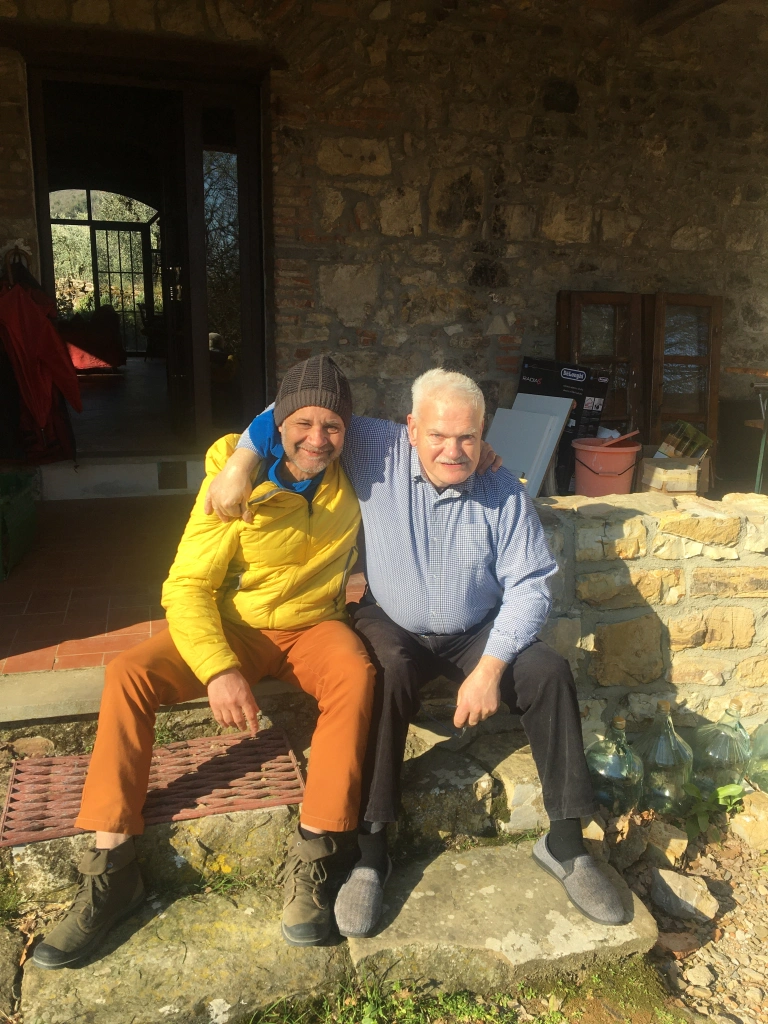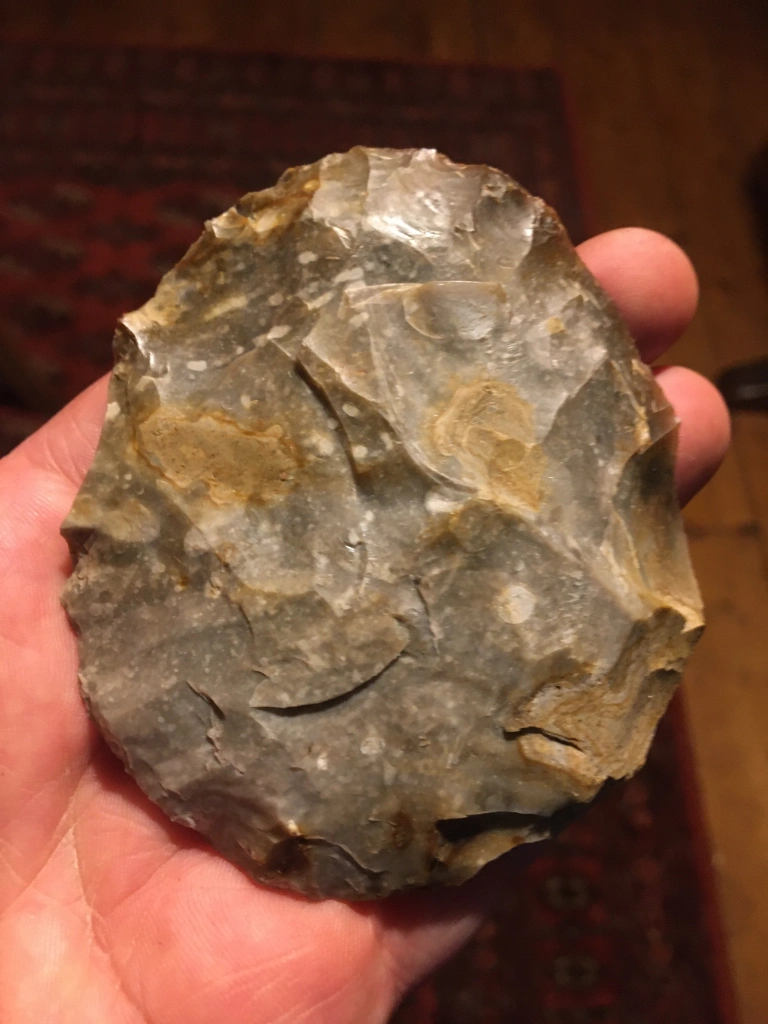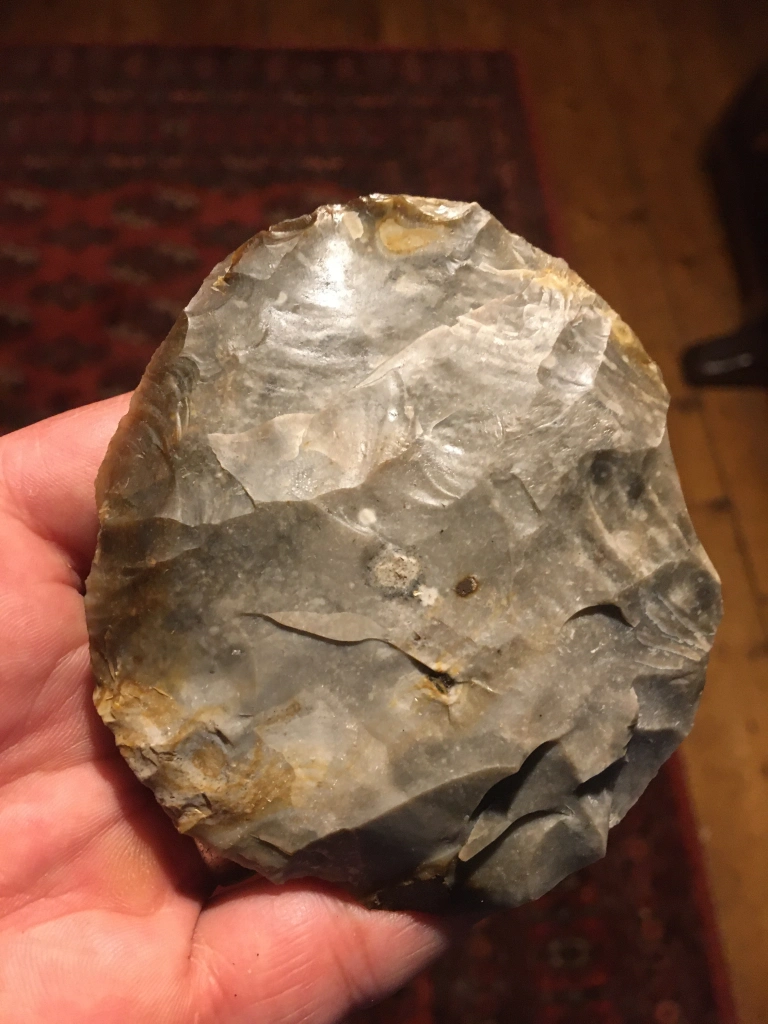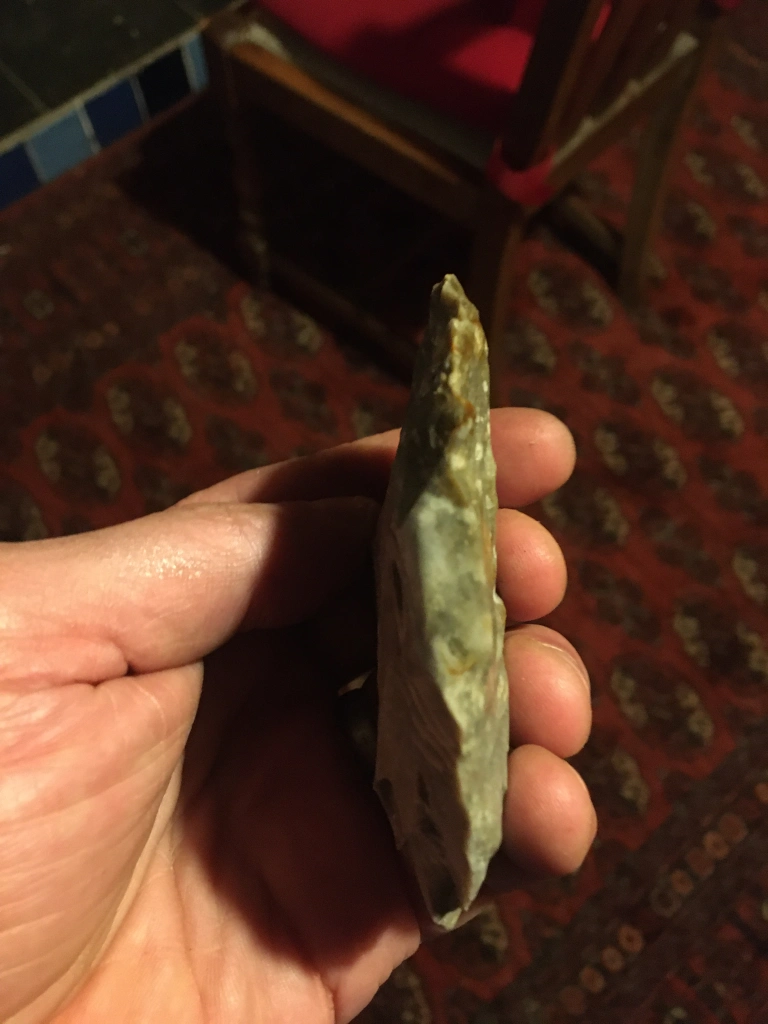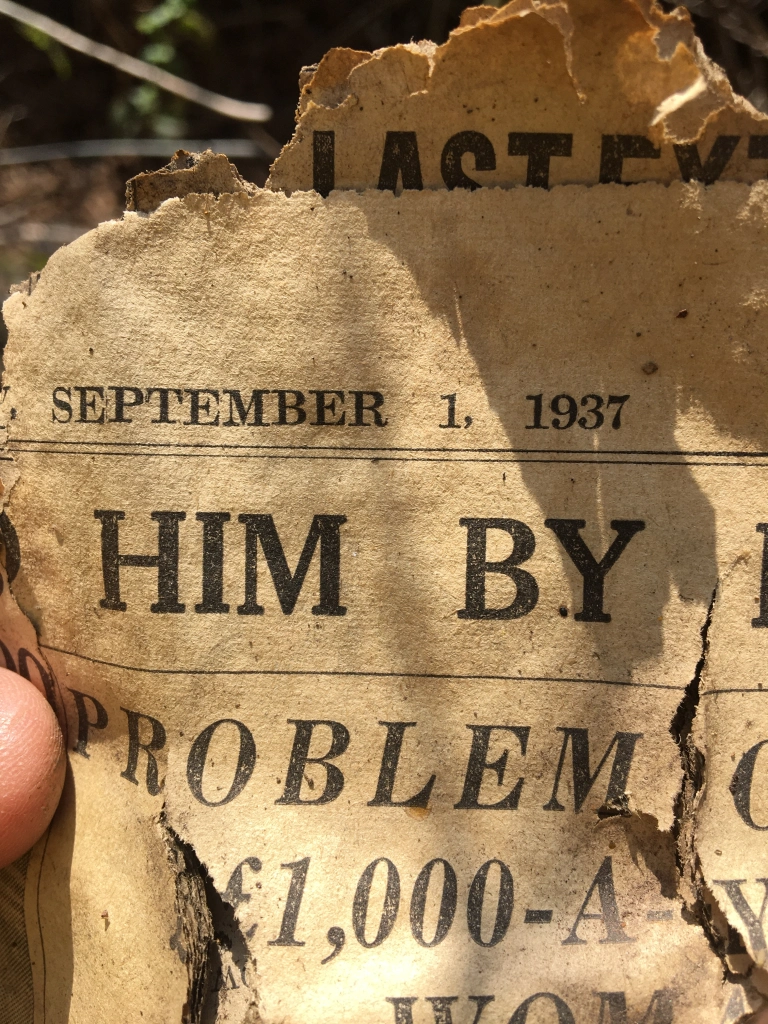
This afternoon Roxanna, Bella and myself went to the bottle tip. I thought from the style of the earliest bottles it was 1940s material and this newspaper from the site indicates late 1930s.
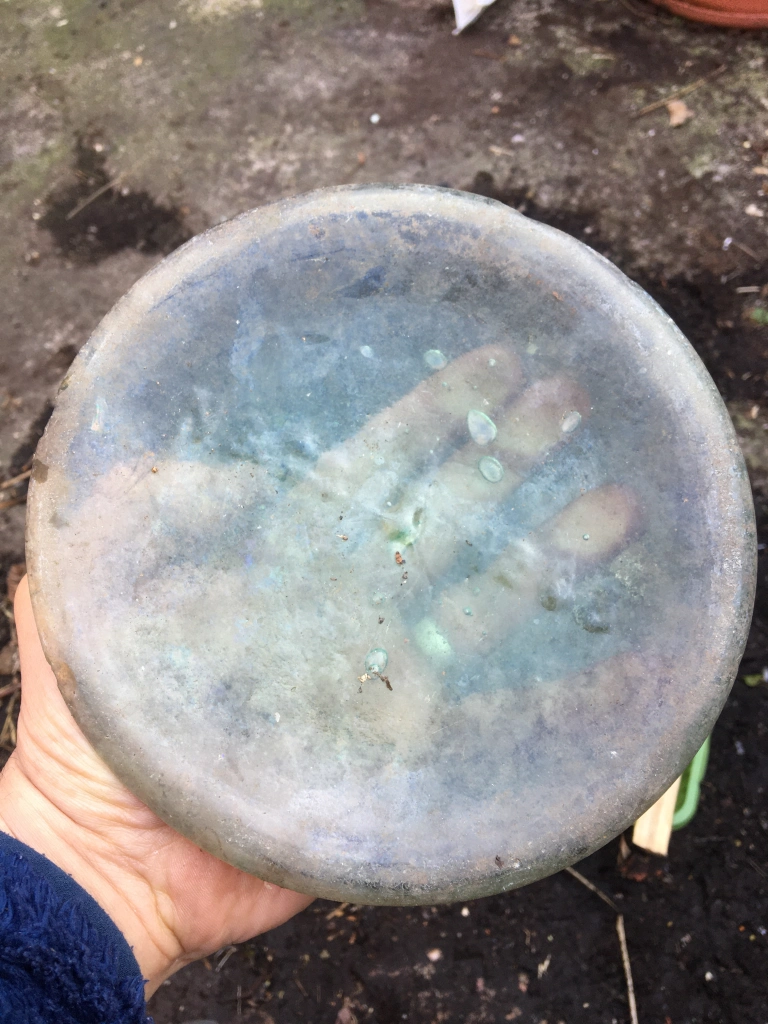
I was looking for big pieces and at first thought this was a metal pan lid. It was very concave and so needed considerable reduction to get it flat, but apart from a couple of irritating step fractures the glass behaved really well.
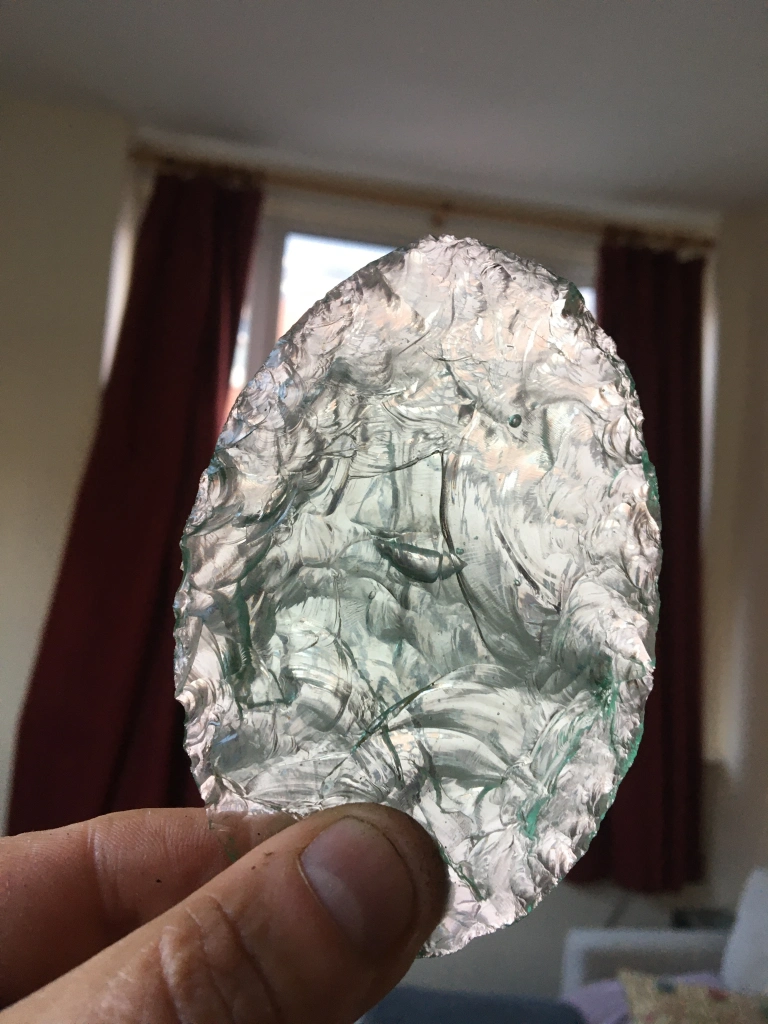
I took a few risks with this, but well prepared platforms and well behaved material led to this nice and lumpy but symmetrical ovate. Roxanna is not as keen on the bottle tip as me so we went to a cafe afterwards, to have some daddy daughter time…on our phones 😐



